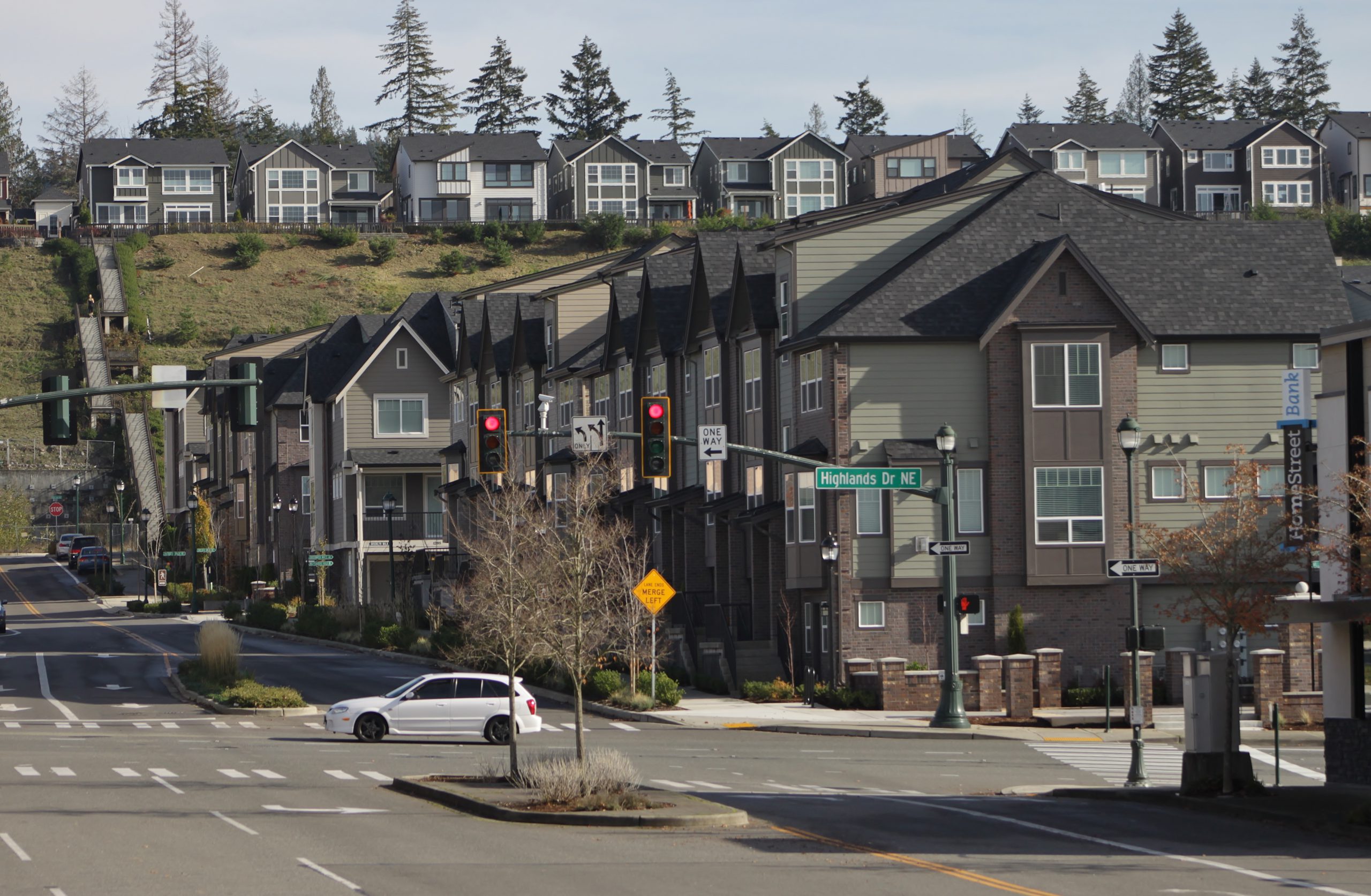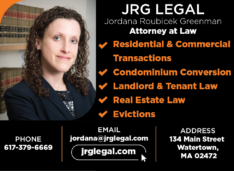New Housing Choice Law Could Have Large Impact on Affordable Housing in Massachusetts
By Eric Weld, MassLandlords, Inc.
Housing choice legislation, recently signed by Gov. Charlie Baker as part of a $626 million economic development bill (191 H.5250), may have more impact on zoning than any law in decades. But due to the construction of the bill, its impact will be largely decided by municipalities across the state.
Chapter 358 of the Acts of 2020, signed by Gov. Baker on January 14, 2021, is a series of revisions to MGL Chapter 40A, commonly known as the Zoning Act. The Zoning Act, first ratified in 1954, applies to 350 cities and towns in the state. Boston operates under its own enabling act.
Most significantly, the housing choice law, Chapter 358, includes a change to the voting threshold for municipal legislative bodies to approve several categories of zoning changes, outlined below. (Chapter 40 modifications are designated in sections 16-56 of the new law). For decades, since ratification of the Zoning Act, the voting threshold required to change any local zoning laws and ordinances has been a two-thirds majority, also known as a supermajority. This means that two-thirds of a town meeting, city council, select board or other legislative body would need to approve a zoning change for it to pass.
The new law, following a trend in some other states, lowers that threshold to a simple majority – over 50% of votes cast – needed for some zoning law changes. That change alone could make a large impact because hundreds of development projects that have failed to receive supermajority approvals could, in theory, now return for simple majority passage.
Another impactful tenet of the bill is a requirement that communities served by the MBTA (Massachusetts Bay Transit Authority) must include one district “of reasonable size” of multi-unit housing within a half-mile of that community’s station.
The law also defines several terms pertinent to zoning, and establishes a series of grants for various community development projects.

Development of multi-family housing may have an easier path to approval with the simple majority voting threshold established for some zoning changes. Image: CC BY_SA Wikimedia commons
Reducing the Supermajority Voting Threshold for Zoning
Nearly since the beginning of his administration, Governor Baker has placed housing, especially affordable housing, near the top of his policy agenda. He has introduced the Housing Choice Initiative several times as part of other legislation, but the bill failed to reach his desk until now.
In recent years, Massachusetts unfortunately has ranked among the worst in the nation in housing and rent price increases. Several factors account for that ignominious distinction, longstanding restrictive zoning being one of them. (Read more about the state’s history of exclusionary zoning in this article.)
The centerpiece of Baker’s housing choice proposals has long been the reduction of the voting threshold for local zoning changes. The intent behind that change to the Zoning Act is to remove barriers to developing more housing. However, it’s not universally agreed that the result will be an increase in affordable housing, the kind of housing the state most needs.
Still, housing choice is and has been supported by many housing advocates and groups in the state, who point out the scores of housing development projects that have failed to pass or to be considered due to the supermajority voting requirement in municipalities.
Case in Point: Salem
The most well-documented case, frequently cited by Gov. Baker to support the housing choice bill, is Salem, Mass. The city council of Salem has repeatedly attempted and failed to pass a local ordinance that would require any new housing project with six or more residences to include affordable units. The proposal has failed to garner a supermajority, consistently stalling with a vote of seven in favor, four against.
Salem Mayor Kim Driscoll has publicly voiced her frustration. “Super disappointed that another 7–4 Council vote means we won’t have an inclusionary housing ordinance in Salem,” she said on Twitter in July 2020, following the most recent failure to pass the proposal. “This would have helped our affordable housing needs.”
In balance to the Salem case, other wealthy communities in the state have seen success in promoting affordable housing. Newton, an affluent suburb of Boston, approved a housing development project with specified affordable and middle-income units. And in 2019, Cambridge voters elected a slate of city council members who campaigned on approving an affordable housing overlay in the city, after the proposal had failed the supermajority hurdle.
How Will the Housing Choice Bill Play Out?
It will be interesting to monitor how the housing choice bill plays out across the state, especially in and around Boston, where multiple development projects that have failed will likely be reintroduced with the lowered voting threshold in place.
In fact, it could be a lucrative strategy for developers – such as in Salem – to look at past projects that failed on supermajority approval, purchase properties involved in that decision, then return to local legislatures for a simple majority revote for project approval and subsequent profit.
Let’s look closer at the components of the law and what they could mean for housing providers in Massachusetts
Zoning Changes Eligible for Simple Majority Approval
Section 19 of the housing choice law establishes the right of municipalities to change zoning laws with a simple majority vote in four situations:
1) amendments to zoning ordinances and bylaws allowing, as of right, multi-family housing or mixed-use development, accessory dwelling units, attached or separate from the principal dwelling, and open-space residential development;
2) amendments to zoning bylaws and ordinances permitting increases in population density, or decreases in the amount of parking required for residential or mixed-use development;
3) adopting zoning ordinances or bylaws providing for natural resource protection, modifying required dimensions of structures, lot areas, setbacks, open space and parking coverage to allow additional housing; and
4) adoption of a Smart Growth zoning district or starter home zoning district. Smart Growth zoning districts are overlay areas within a community, usually near town centers, that allow and encourage mixed use and affordable housing. At least 20% of dwellings in a Smart Growth district must be affordable. Smart Growth districts are allowed higher density residential development as of right, without zoning variance. There are about 40 Smart Growth zoning districts throughout the state.
Adoption of any new zoning ordinances or bylaws by a simple majority cannot be combined with those requiring a supermajority.
Any proposed zoning bylaw or ordinance that fails to receive a majority vote, and is not passed, cannot be considered again through municipal governmental process, for at least two years.
Simple Majority Zoning Changes – Progress or Regression?
On one hand, these wording and rules changes to the Zoning Act are a step in the right direction to increasing housing, and affordable housing, in the state. This objective has been significant in the current administration’s ongoing policy platform.
On the other hand, the change in zoning law voting thresholds could be seen as a setback. True, it allows strict majority decision-making for some zoning changes, and some may herald that as democratic progress. However, the change to simple majority zoning changes reduces the need for strong community consensus, and will potentially enable housing regulations not favored by nearly half of a community’s population.
Further, some detractors of the bill have pointed out that, while easing the path to zoning change will likely facilitate housing development on the whole, it won’t necessarily increase affordable housing, which they argue must be prioritized in the state.
Then there is the long-term issue with the affordability clauses incorporated in the housing choice bill. Section 24, for example, which establishes the simple majority vote threshold, requires that at least 10% of new multifamily housing near MBTA stations must be affordable to households making 80% or less of area median income (AMI), “for a period of not less than 30 years.” This is similar language used in hundreds of housing developments throughout Boston and the MBTA region. The past decade has seen many of those contract clauses expire and rents quickly rising out of the affordable range, adding to the state’s housing crisis.
Finally, while this housing choice bill may afford long-term solutions, it will do little to alleviate short-term urgencies that the state now faces, exponentially exacerbated by the economic crunch from the coronavirus pandemic. Construction is one thing, but thousands are about to lose their homes in coming weeks and months, faster than a construction bill can backfill. Aside from the housing choice law, the housing safety net still must be addressed in the immediate term.

The housing choice bill requires MBTA communities to include at least one multi-family housing district “of reasonable size,” defined as 15 units per acre, a gross density represented in this Seattle neighborhood. Image: CC BY-SA Wikimedia Commons
Multi-family, Affordable Housing in MBTA Communities
Section 18 provides that all MBTA communities shall establish a zoning ordinance or bylaw that allows for at least one district permitting the development of multi-family housing as of right. The multi-family housing must be without age restrictions and must be suitable for children.
“Reasonable size” is defined as having a minimum gross density of 15 units per acre (subject to previous limitations under Chapter 131) and be located not more than 0.5 miles from a rail, subway, ferry or bus station.
MBTA communities that fail to comply with this change will forfeit eligibility for Housing Choice Initiative funding, as well as Local Capital Projects Funds and MassWorks infrastructure program funds.
Potentially, this could leave the door open for communities that can better afford to forgo state funding to allow inequitable zoning to remain in place. If a wealthy community opposes multi-family housing near MBTA stations, according to the structure of the housing choice law, that community could opt to disallow proposals for such developments and accept the loss of earmarked funding.
Housing Choice Definitions of Terms
The bill establishes definitions for several terms used in Chapters 40A and 40S of the Zoning Act.
The addition of “as of right” is particularly important for the housing choice bill, especially as used in the section requiring a multi-family district within close proximity to MBTA stations. “As of right” means that a development project has a right to proceed under zoning ordinances and bylaws without the need for special permits, variances or other extraordinary municipal legislative processes. In other words, the right is established for those projects, without the need for further municipal approval.
The addition of the term “as of right” may serve to clear the way for development projects that previously would have had to seek clearance by local legislative bodies.
Another term, “MBTA Community,” lists “51 cities and towns” and “14 cities and towns,” as defined in Section 1 of chapter 161A (see the end of this article for the complete list). These communities, according to the new section 3A of the Zoning Act, “shall have a zoning ordinance or by-law that provides for at least 1 district of reasonable size in which multi-family housing is permitted as of right.”
Other terms defined in the bill that will play important roles in zoning changes include “accessory dwelling unit,” “mixed-use development,” “eligible locations,” “gross density” and “planned unit development.”
Affordable Housing Incentive Grants
An essential part of the housing choice bill is a program of grants designed to incentivize communities to adopt affordable and sustainable housing and small business development.
The housing choice law commits more than $420 million for capital grants and other financial assistance for housing and local development projects.
That includes $60 million for the Massachusetts Growth Capital Corporation to fund development encouraging small businesses owned by women, veterans, minorities and immigrants, and by low- and moderate-income entrepreneurs. It also includes $40 million for the rehabilitation or redevelopment of “blighted, abandoned, vacant or underutilized properties.”
The bill states that MBTA communities that do not pass ordinances specified under section 18 – requiring these communities to establish at least one district for multi-family housing within 0.5 miles of a station – will not be eligible for grants included in the law. No time frame is designated to meet this requirement. The Department of Housing and Community Development will collaborate with the MBTA and state Department of Transportation to produce compliance guidelines for this section.
For some communities, it could mean a sizable loss of state funding.
Housing Choice Aims to Increase Accessory Dwelling Units
Many of the provisions in Chapter 358 of the Acts of 2020 pertain to developers of multi-unit housing projects. But one provision may have impact on small, mom-and-pop and single-family landlords. The definition in the bill of “accessory dwelling units,” and the inclusion of that rental arrangement in the lowered voting threshold for zoning changes, broadens the allowance of these rental units, also sometimes called “in-law apartments.”
With a simple majority vote, communities, such as Salem, may now pass local ordinances allowing single-family homeowners to build accessory apartments within or attached to their homes. This provision could add a significant boost to small, affordable rental units.
Accessory dwelling unit (ADU) ordinances vary across the state. Some communities require inordinate lot sizes. Manchester, for example requires a lot twice the size of the minimum required lot size for the district in order to accommodate an ADU. Unsurprisingly, that community has very few ADUs. Medfield allows ADUs only in houses built before 1938 with a minimum floor area of 2,000 square feet. Weston only allows ADUs in houses of at least 3,000 square feet.
For decades, these zoning requirements have been difficult to change due to the supermajority vote requirement. With the simple majority requirement now in place, many communities could open up the ADU stock.
Could Housing Choice Law Improve Massachusetts’ Low Ranking for Affordability?
Chapter 358 of the Acts of 2020 is a 100-page law that aims to make a large impact on alleviating the well-known housing crisis in Massachusetts.
In 2019, Massachusetts was ranked the most expensive state to buy a home in, according to SmartAsset, mainly due to a high property tax rate. USNews listed Massachusetts 40th in home affordability, coupled with the 47th highest cost of living. It’s hard to view this as a sustainable set of circumstances, especially as Massachusetts has seen the highest increase in homelessness in the country since 2007. The U.S. Department of Housing and Urban Development estimated 18,471 people experiencing homelessness in Massachusetts every day as of January 2019.
If the housing choice bill has its intended effect, it could pave the way for hundreds of affordable housing projects that previously could not win approval.
With the bill’s emphases on affordable and multi-family housing near public transportation, loosening restrictions on accessory dwelling units, easing of zoning change voting thresholds, and millions of dollars for affordable housing incentive grants, it may finally make a much-needed dent in the state’s numerous negative housing statistics.

The new housing choice law encourages multi-family and affordable housing development near MBTA stations in 65 communities. Image: CC BY-SA Wikimedia commons
MBTA Communities as Defined in Section 1, Chapter 161A
The following are lists in Section 1, Chapter 161A, defined as MBTA communities (the list for the purposes of this law is distinct from the 176 Massachusetts communities served by the MBTA)
“51 cities and towns”
Bedford, Beverly, Braintree, Burlington, Canton, Cohasset, Concord, Danvers, Dedham, Dover, Framingham, Hamilton, Hingham, Holbrook, Hull, Lexington, Lincoln, Lynn, Lynnfield, Manchester-by-the-Sea, Marblehead, Medfield, Melrose, Middleton, Nahant, Natick, Needham, Norfolk, Norwood, Peabody, Quincy, Randolph, Reading, Salem, Saugus, Sharon, Stoneham, Swampscott, Topsfield, Wakefield, Walpole, Waltham, Wellesley, Wenham, Weston, Westwood, Weymouth, Wilmington, Winchester, Winthrop and Woburn.
“14 cities and towns”
Arlington, Belmont, Boston, Brookline, Cambridge, Chelsea, Everett, Malden, Medford, Milton, Newton, Revere, Somerville and Watertown.
Members, visit our regional message boards to ask experienced landlords about details or advice on impacts of the housing choice bill on their communities.




